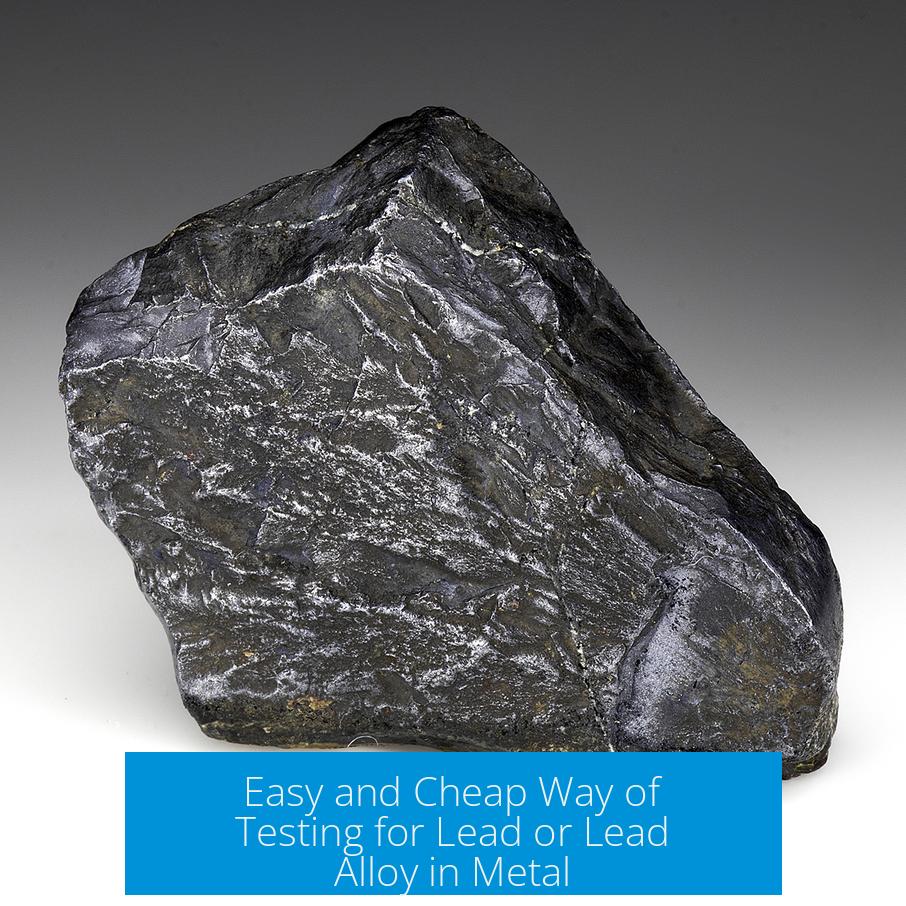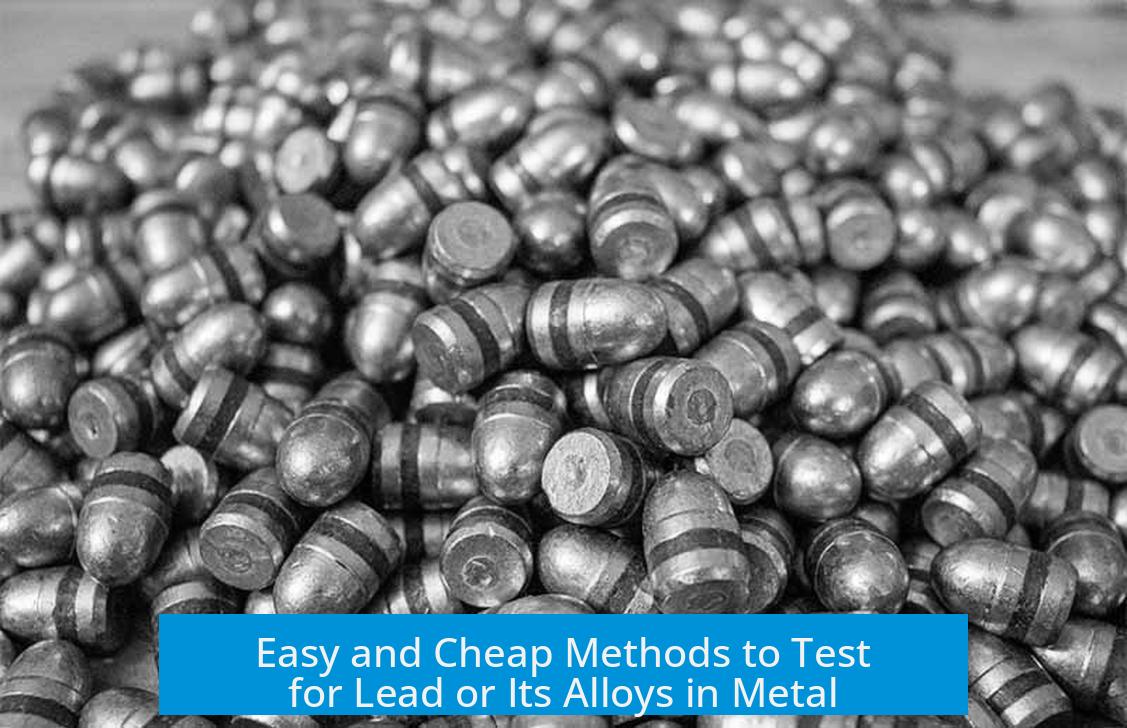Easy and Cheap Way of Testing for Lead or Lead Alloy in Metal

The most practical and cost-effective method for testing the presence of lead or lead alloy in metal is using a rhodizonate-based lead testing kit, which is widely available in hardware stores and costs around $20.
Rhodizonate-Based Lead Testing Kits
These kits utilize a chemical reagent that reacts with lead to produce a distinct pink color. This color change occurs when the rhodizonate solution contacts lead on the metal surface, allowing for quick identification.
- How it works: Apply the test solution to the metal. The presence of lead triggers a pink color reaction.
- Limitations: The reagent may also react with some other metals, producing false positives. Following the instructions closely is essential for accurate interpretation.
- Availability: Easily found at most hardware stores under brand names such as 3M Instant Lead Test Kit or lead pens.
- Cost: Approximately $20, making it affordable for field and home use.
This method suits quick screening, especially when expensive instruments are not accessible. It provides immediate visual feedback and requires minimal preparation.
Wet Chemical Test Strips
Lead test strips, available online through retail platforms like Amazon, claim to identify lead presence through chemical reactions on impregnated strips. However, their reliability is questionable.
- These strips often yield inconsistent results.
- False positives and false negatives are common due to sensitivity and interference issues.
- Given the reported unreliability, they are not recommended for dependable lead detection in metals.
Advanced Instrumental Techniques
Professional analysis methods exist for precise lead detection but are neither cheap nor simple for casual use.
| Technique | Principle | Pros | Cons |
|---|---|---|---|
| X-ray Fluorescence (XRF) | Detects surface lead content by exciting atoms with X-rays and measuring fluorescence. | Non-destructive, fast results. | Expensive equipment, mainly rented. |
| Inductively Coupled Plasma (ICP) Spectroscopy | High-temperature plasma excites atoms; emitted wavelengths identify lead. | Highly sensitive and accurate. | Requires laboratory setting and costly instruments. |
| Atomic Absorption Spectroscopy (AAS) | Measures light absorbed by vaporized lead atoms to quantify concentration. | Precise quantification. | Also requires lab access and expensive gear. |
These techniques are suited for detailed analysis but not for general inspection due to their cost and operational complexity.
Lead Presence in Metals and Tools
Understanding the context of lead use in metals helps set expectations for testing outcomes.
- Lead is heavier and costlier than iron or steel, and it tends to make alloys brittle.
- Lead is rarely, if ever, used in steel parts or tool alloys for structural purposes.
- Bronze and brass alloys may contain small amounts (1-3%) of lead, primarily for lubrication in bushings and sliding components.
- Lead may appear as contamination in recycled metals but holds minimal functional use in cheap steel tools.
Consequently, testing for lead in steel tools typically yields negative results unless the metal contains brass or bronze parts.
Key Takeaways
- The easiest and cheapest reliable method is a rhodizonate-based lead testing kit costing about $20.
- Wet chemical test strips available online are not recommended due to poor reliability.
- Advanced lab techniques like XRF, ICP, and AAS provide precise results but are costly and complex.
- Lead use in metal tools is uncommon, mostly limited to small quantities in certain brass or bronze components.
How can I test for lead in metal cheaply at home?
Use a rhodizonate-based lead testing kit from a hardware store. The solution turns pink when lead is present. Kits cost about $20 and are simple to use.
Are lead test strips from online stores reliable?
Lead test strips bought online often give false positives and negatives. They are not reliable for testing lead in metal.
Can I use a lead pen to check metal for lead?
Yes. Lead pens, like the 3M Instant Lead Test Kit, use rhodizonate chemicals and work by changing color if lead is present. They are an easy and affordable option.
Is lead commonly found in steel tools?
Lead is rarely used in steel tools. It can sometimes appear as a small amount (1-3%) in brass or bronze parts for lubrication, but not in steel alloys.
What are accurate methods to detect lead but expensive?
X-ray fluorescence (XRF), inductively coupled plasma (ICP) spectroscopy, and atomic absorption spectroscopy (AAS) provide precise lead detection but need costly equipment. These are usually for labs or rented setups.





Leave a Comment